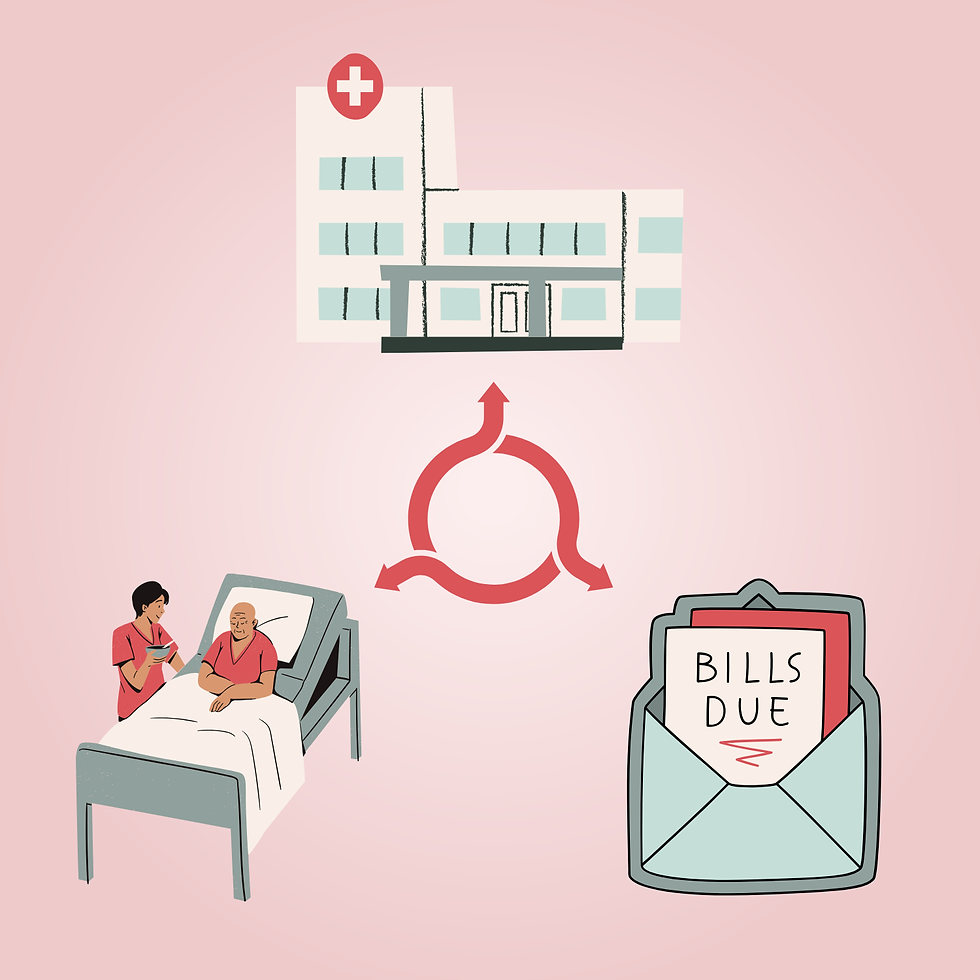Medical Research and Politics
- Pranav Kannan
- May 9
- 3 min read
Medical research in the United States is funded by the National Institute of Health (NIH) to drive advancements of diagnostics, treatments, and preventative measures (AP News, 2025). The current government budget proposal eliminates 40% of NIH funding to institutions -- dropping the value from $48.5 billion to $27.3 billion (AP News, 2025). This action delays current studies and undermines access to research across universities and patients (NPR, 2025a; NPR, 2025b). Moreover, the funding freeze violates the bioethical principles of justice, beneficence, non‑maleficence, and autonomy by restricting resources, harming patient populations, and reducing academic exploration (Nature, 2025; Science, 2025).

The NIH is the largest public funder of medical research globally, however, the freeze on February 7, 2025 led to a capping of all indirect costs at 15% -- a significant decrease from the 28% average (National Institutes of Health [NIH], 2025). Though the NIH states that this was necessary to ensure that proper grants got funding, institutions were forced to relocate their own resource costs to direct research spending (American Progress, 2025). Universities need indirect costs to maintain labs, libraries and important facilities -- if funding plummets, the nation will reduce its research capacity and slow scientific discovery for novel medical cures (Association of American Medical Colleges [AAMC], 2025; AP News, 2025).
By allocating research funding, the NIH increases fair access to resources that drive innovation nationwide, also known as distributive justice. Cutting funding forces institutions with smaller endowments to manage their own funding, widening the inequalities between affluent research institutions across the nation (AAMC, 2025).
The principle of beneficence means that medical research should benefit the people. NIH funded research underscores new discoveries and novel policy measures. Delays will impact humans’ ability to fight disease and prevent well-being. Abrupt funding freezes will harm scientific talent -- since grants are vanishing, young scientists might leave academia and slow discovery creating more harm for research.
Finally, academic freedom and institutional autonomy are stifled when political priorities determine what receives resources. This undermines the ability to research based on scientific merit rather than political favorability. Scientists lose academic freedom and patients lose impactful, effective care.
Current Policy Recommendations:
Restore the NIH Budget to the same level as 2024. Congress should fight cuts and approve more funding for the NIH, as backed by the AAMC and over 400 reputable organizations (AAMC, 2025).
Establish an Independent Ethics Review Panel. Create a bipartisan, neutral body to evaluate budget proposals through ethical frameworks, ensuring decisions align with principles of justice, beneficence, and non‑maleficence, and autonomy (Nature, 2025).
Enhance Transparency and Stakeholder Engagement. Open discussions with researchers, university leaders, to decide and communicate on policy changes before major funding shifts (Politico, 2025).
Restoring the NIH funding to proper levels will reaffirm the US commitment of justice, beneficence, non‑maleficence, and autonomy in biomedical research. Moreover, this will ensure that medical discoveries will translate effectively from lab to patients -- regardless if a scientist is from a wealthy institution or a patient's socioeconomic status (AAMC, 2025; NIH, 2025).
Reviewed By: Aman Maredia
Designed By: Nancy Chen
References:
AP News. (2025, April 16). The draft budget plan proposes deep cuts across federal health programs. AP News. https://apnews.com/article/70ae99161321f0b779e2e56d8d2db304
Association of American Medical Colleges. (2025, February). AAMC statement on drastic cuts to NIH‑funded research. Association of American Medical Colleges.
Association of American Universities. (2025, April). AAU signs an ad hoc statement recommending increased funding for NIH in FY 26. Association of American Universities. https://www.aau.edu/key-issues/aau-signs-ad-hoc-statement-recommending-increased-funding-nih-fy26
Axios. (2025a, April 18). NIH halts key LGBTQ+ HIV studies, citing mission conflict. Axios. https://www.axios.com/local/chicago/2025/04/18/nih-cuts-hiv-research-lgbtq-health
Axios. (2025b, April 14). Trump's NIH cuts could cost Hillsborough $57 million. Axios. https://www.axios.com/local/tampa-bay/2025/04/14/trumps-nih-cuts-cost-hillsborough-57-million
National Institutes of Health. (2025, February 7). Supplemental guidance to the 2024 NIH grants policy statement: Indirect cost rates (NOT‑OD‑25‑068). National Institutes of Health. https://grants.nih.gov/grants/guide/notice-files/NOT-OD-25-068.html
Nature. (2025). How Trump 2.0 is slashing NIH‑backed research — in charts. Nature. https://www.nature.com/articles/d41586-025-01099-8
NPR. (2025, February 22). NIH funding freeze stalls $1.5 billion in medical research grant funding. NPR. https://www.npr.org/sections/shots-health-news/2025/02/22/nx-s1-5305276/trump-nih-funding-freeze-medical-research
NPR. (2025, February 23). Medical researchers brace for ripple effects from cuts in NIH funding. NPR. https://www.npr.org/2025/02/23/nx-s1-5290142/medical-researchers-brace-for-ripple-effects-from-cuts-in-nih-funding
Politico. (2025, April 16). The Trump administration mulls sharp funding cuts at health agencies. Politico. https://www.politico.com/news/2025/04/16/trump-administration-mulls-sharp-funding-cuts-at-health-agencies-00294781



Comments